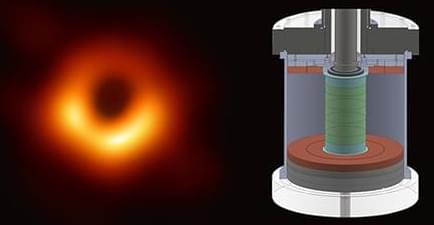Magnetorotational instability—a process that might explain the dynamics of astrophysical accretion disks—has finally been observed in the laboratory.
What do black holes, forming stars, and a tank of liquid metal in Princeton, New Jersey, have in common? The first two might and the third one definitely does play host to an important process in magnetized-fluid dynamics called magnetorotational instability (MRI). MRI has been well studied theoretically and computationally, and related processes have been seen experimentally [1]. But until now, there has not been an unambiguous laboratory confirmation of its existence. Yin Wang and his colleagues at Princeton University have demonstrated MRI in an ingenious liquid-metal experiment—the culmination of more than 20 years of work [2].
The team’s discovery is significant because MRI has long been suspected of being at the heart of accretion [3]. Accretion, in which material spirals inward in a flattened disk around a black hole or a young star, is a major source of the light coming from those objects. For accretion to occur, the material in the disk must lose its angular momentum. However, angular momentum is conserved: much like the trash we generate in our daily lives, it does not cease to exist when it is not wanted. Instead, angular momentum must be passed from the inner parts of the disk to the outer parts. What drives this angular-momentum transport has long been a mystery.
